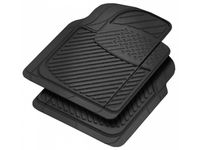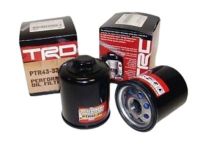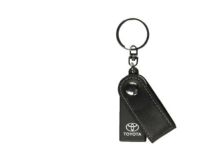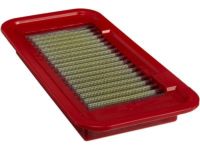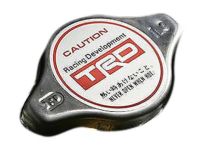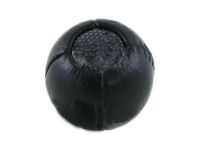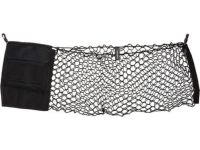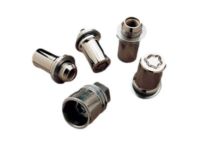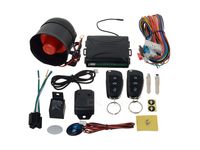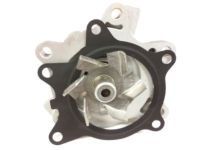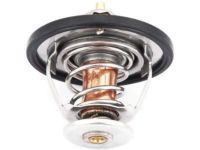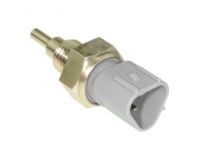- Live Chat
- 1-888-905-9199


Why choose ToyotaPartsDeal
- High-Grade Parts
The best site to buy Toyota Echo genuine parts for years has been ToyotaPartsDeal.com. We're the best online store for genuine parts. Toyota Echo parts you could ever need are available here at the finest quality and best value on the web that will have your vehicle performing past its limits.
- Value For Money
What makes us the best choice for OEM Toyota Echo parts? You get tremendous savings because our goal is to offer unbeatable prices. At ToyotaPartsDeal.com, Our products offer the same performance and reliability as their OEM counterparts without having to break your wallet.
- Quick Delivery
Everything you need for routine maintenance and repair can be found in our complete Toyota Echo parts catalog. Having the best OEM parts inventory available, the parts for your vehicle will arrive fast no matter your location in the nation. You'll be back on the open road before you know it.
Popular Genuine Toyota Echo Parts
- Power Train/Chassis Parts View More >
- Body Parts View More >
- Engine/Fuel/Tool Parts View More >
- Electrical Parts View More >
Shop Genuine Toyota Echo Parts with ToyotaPartsDeal.com
The Toyota Echo, known as Toyota Platz in Japan and Toyota Yaris in Europe, was a compact sedan and coupé aimed at young buyers seeking an economical and cost-effective vehicle. It was the predecessor to the Toyota Belta, Yaris coupé, and Vios (XP90). Equipped with a 1.5L four-cylinder engine, the Echo offered front-wheel drive and 4-wheel drive options, providing brisk acceleration. Transmission choices included a five-speed manual or a 4-speed automatic. Most models featured manual windows and locks, air conditioning, and a six-speaker audio system with CD and/or cassette players. In Oceania, North America, and the Philippines, the Echo was also recognized as a hatchback, which was part of the first-generation Vitz series. The Vitz was first revealed at the Paris Motor Show in October 1998 and was introduced in Australia as the Echo in 1999, and Canada in 2003. The Echo was available in three- and five-door hatchback versions, offering different trims to cater to various markets. The model ceased production in 2005. In Australia, the Echo "Sportivo" and Echo "Rush" were introduced, offering additional features and options to enhance the driving experience. Despite being discontinued, the Toyota Echo remains a popular choice for those seeking an affordable and efficient compact vehicle.
Despite its sturdy design, the Toyota Echo may still encounter common issues over time, predominantly with its braking system and engine performance. Many Echo owners have reported braking system failures characterized by visible brake fluid leaks, abnormal noises when braking, pulsating brake pedals, and loose parking brakes. Brake Warning Light activation is another common sign. Checking components like the backing plate, brake drum, hydraulic hose, and brake line could identify the issue. Another frequently reported problem is a decrease in engine performance, often manifested by reduced acceleration, fuel leaks, black smoke from the exhaust, and peculiar noises from the vehicle's front. Some owners also reported instances of overheating, starting difficulties, and activation of the Check Engine Light. In such cases, inspecting the fuel pressure regulator, oil filter, fuel filter, and drive belt is advised. Beyond these systems, coil springs in the suspension system and shift cables in the transmission system may also face wear and tear. Lastly, don't neglect everyday components like door handles and locks, which may malfunction over time, and the vehicle emblem, which can fade. Regular maintenance can extend your Echo's lifespan.
For those Toyota owners who aspire to maintain their vehicles in optimal shape, opting for OEM parts is a wise choice. Precisely engineered, these components adhere to stringent factory guidelines and are produced in state-of-the-art facilities using cutting-edge technologies. Moreover, they are subjected to thorough testing to certify their resilience and safety, thereby making them a dependable option for Toyota owners. Wondering where to find exceptional quality and affordable OEM Toyota Echo parts? You have already come to the right place. Our website boasts a huge selection of genuine Toyota Echo parts at the lowest prices possible. What's more, all parts come with a manufacturer's warranty.
Toyota Echo Parts Questions & Answers
- Q: How do you remove the water pump on Toyota Echo?A: To remove the water pump, start by draining the cooling system and raising the front of the car. Remove the driver's-side engine lower cover and loosen the water pump pulley bolts. Remove the auxiliary drivebelt and then the water pump pulley. Unscrew the bolts and nuts to withdraw the water pump, being prepared for water spillage. Inspect the pump for coolant leakage and listen for any noisy bearings. When refitting, clean the mating faces of the water pump and cylinder block and use a new gasket. Tighten all fixings to the specified torque and refill the cooling system.
- Q: How to test and replace a thermostat in a cooling system on Toyota Echo?A: The thermostat in a cooling system can become slow to react or stick in the open or closed position as it ages. This can cause issues like slow warm-up or rapid overheating. Before assuming the thermostat is the problem, check the coolant level and ensure there are no airlocks. If the engine takes a long time to warm up or the temperature gauge is inaccurate, the thermostat may be stuck open or missing. If the engine runs hot and the radiator top hose is not hot, the thermostat is likely stuck closed and needs replacing. To test the thermostat, start the engine and monitor the temperature of the radiator top hose. If it remains cold and then quickly warms up, the thermostat is working. If not, remove and test the thermostat by heating it in water. If it fails or sticks, replace it. Use a new O-ring and tighten the cover nut/bolt to the specified torque when refitting. Refill the cooling system.
- Q: How to replace a coolant temperature sensor on Toyota Echo?A: To replace a coolant temperature sensor, start by allowing the engine to cool down and then slowly remove the radiator cap to release the pressure in the cooling system. If a new sensor is being fitted, there is no need to drain the system, but if the sensor will be left out for some time, a plug should be inserted to prevent coolant loss. Disconnect the sensor wiring plug and unscrew the sensor, making sure to recover the O-ring seal if applicable. When refitting, tighten the sensor securely and ensure the connector seal is in place before connecting the wiring. Finally, refill or top-up the cooling system as needed. It is important to note that all models have a temperature display warning light, with blue indicating a cold engine and red indicating a hot engine.


































